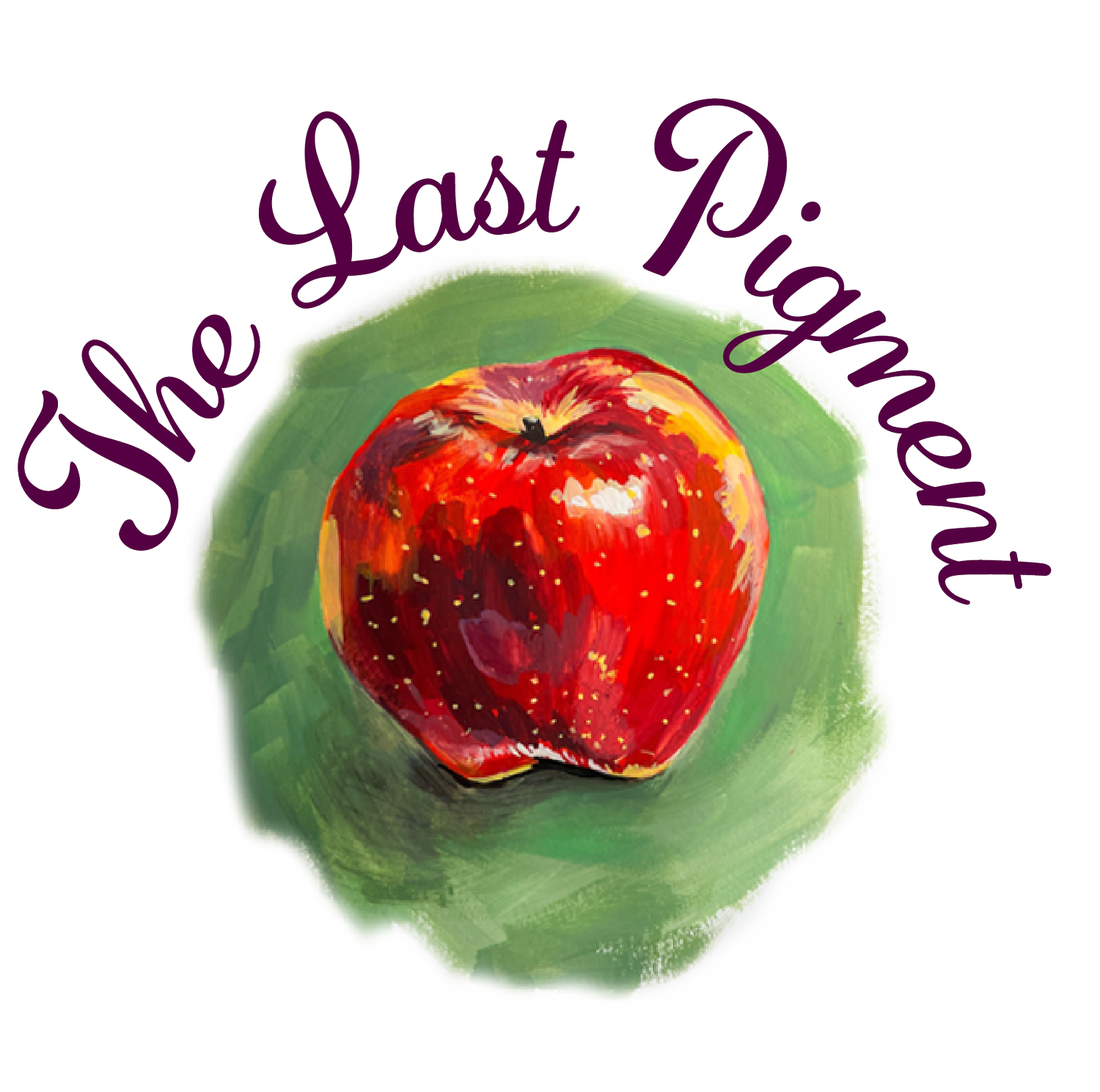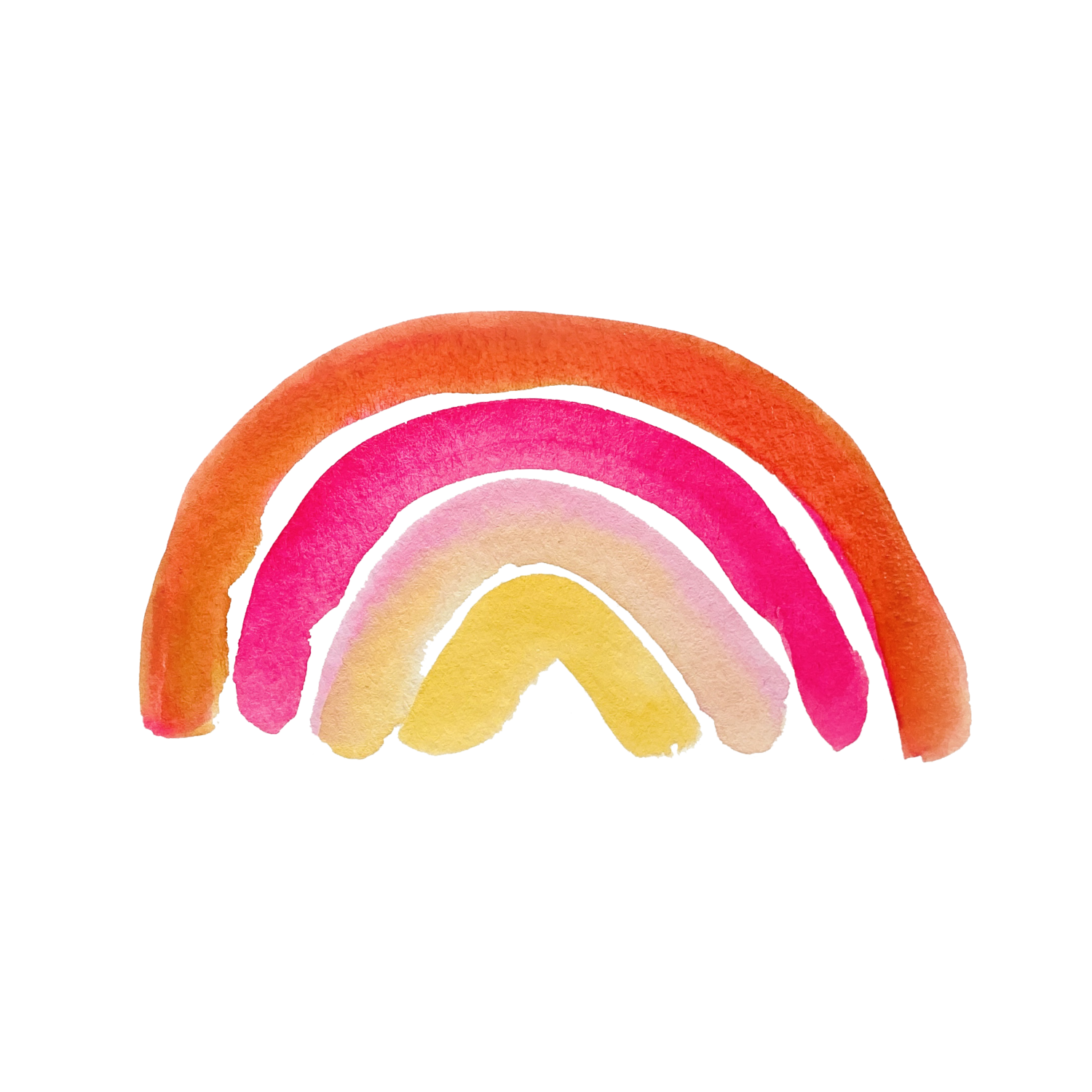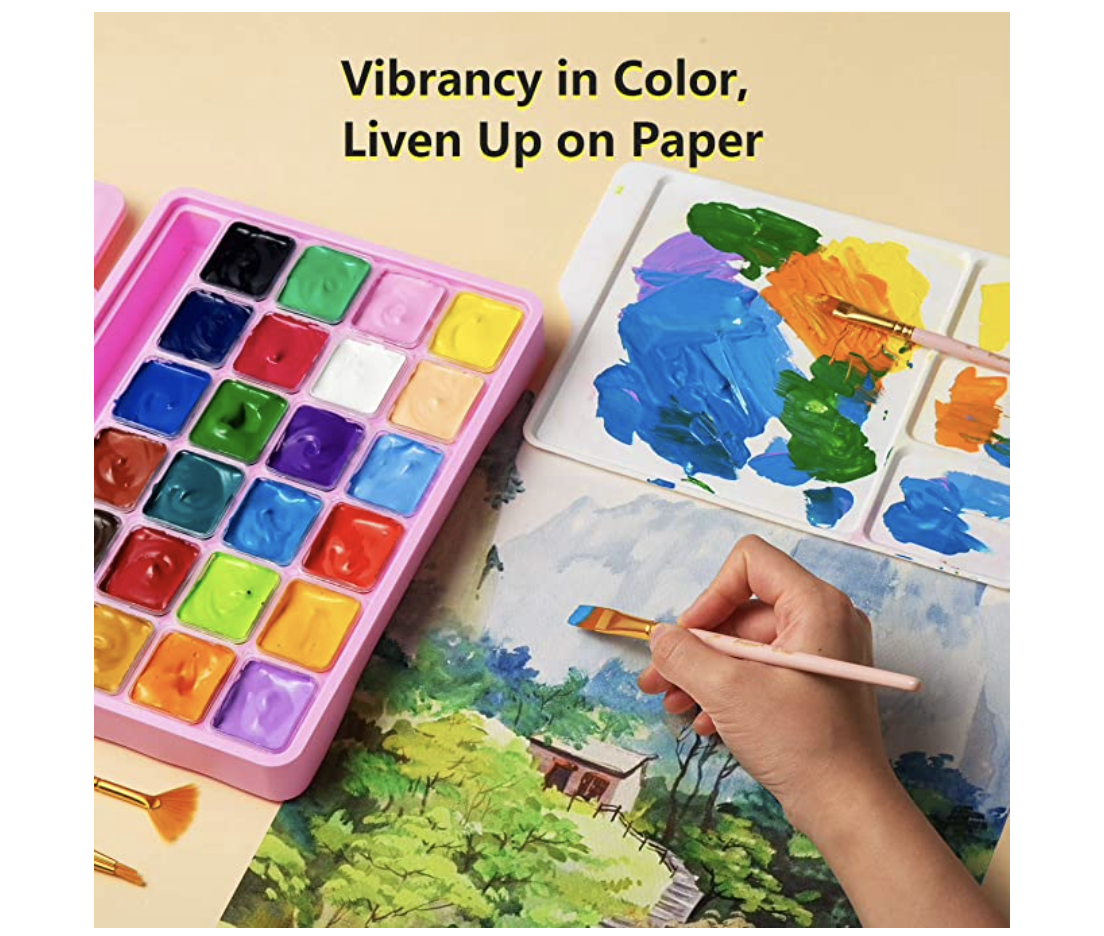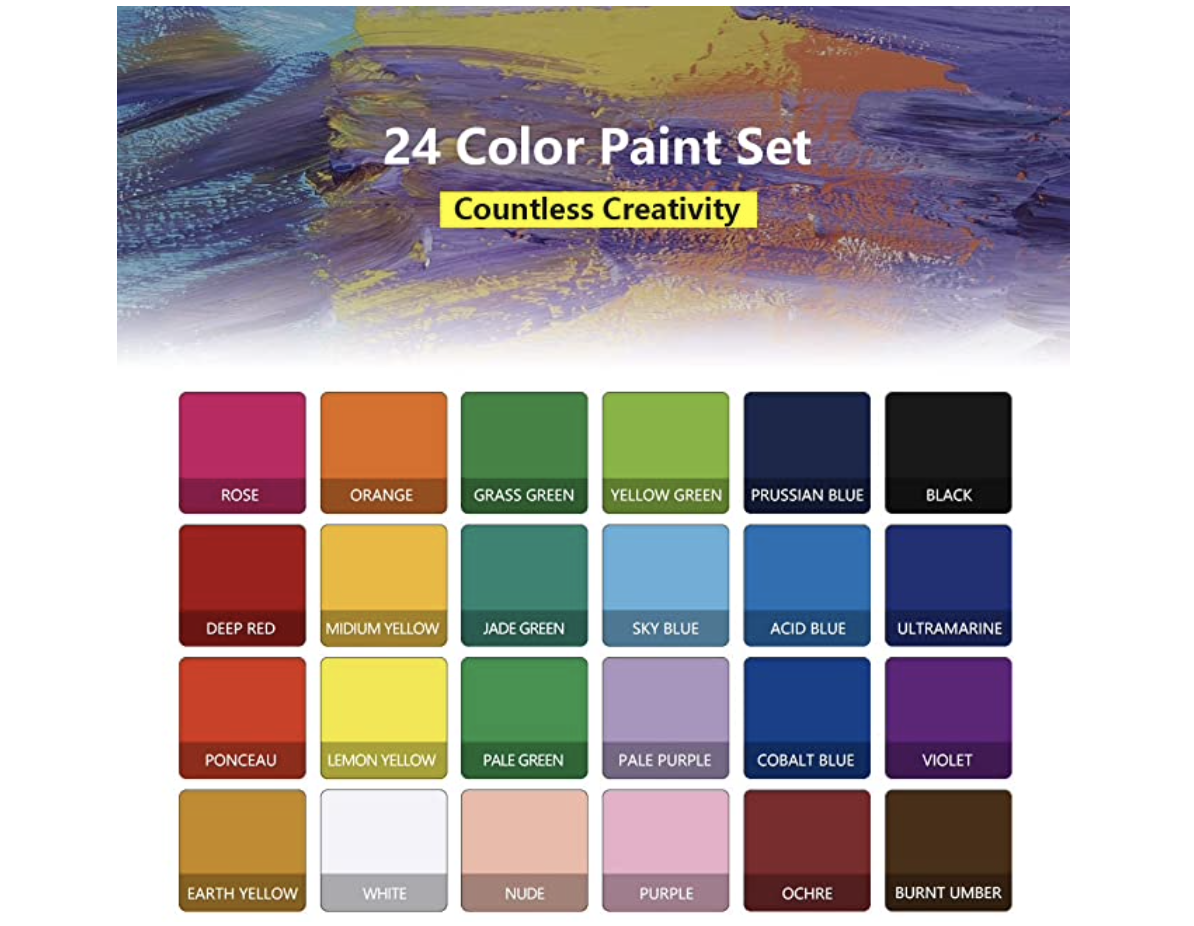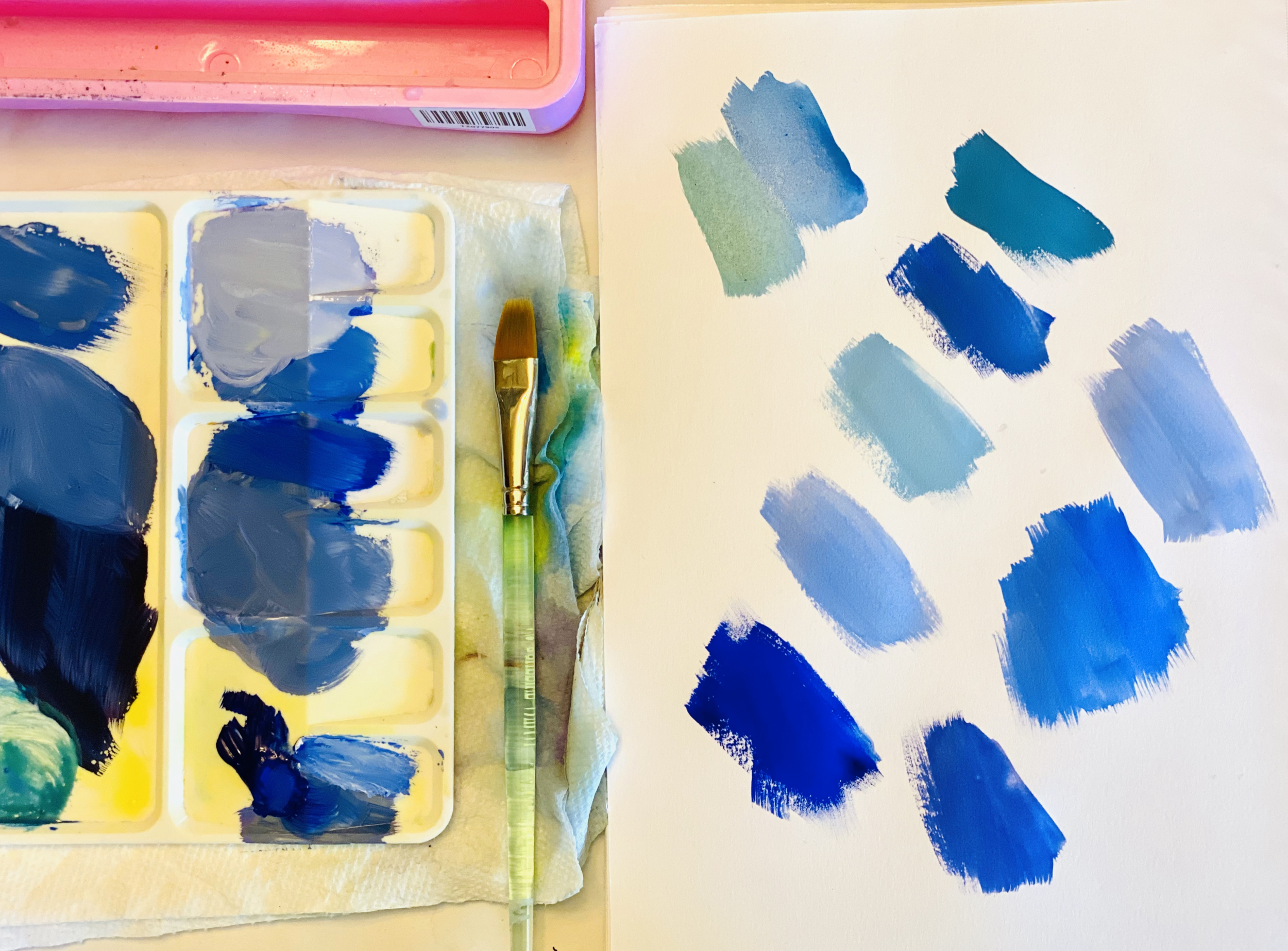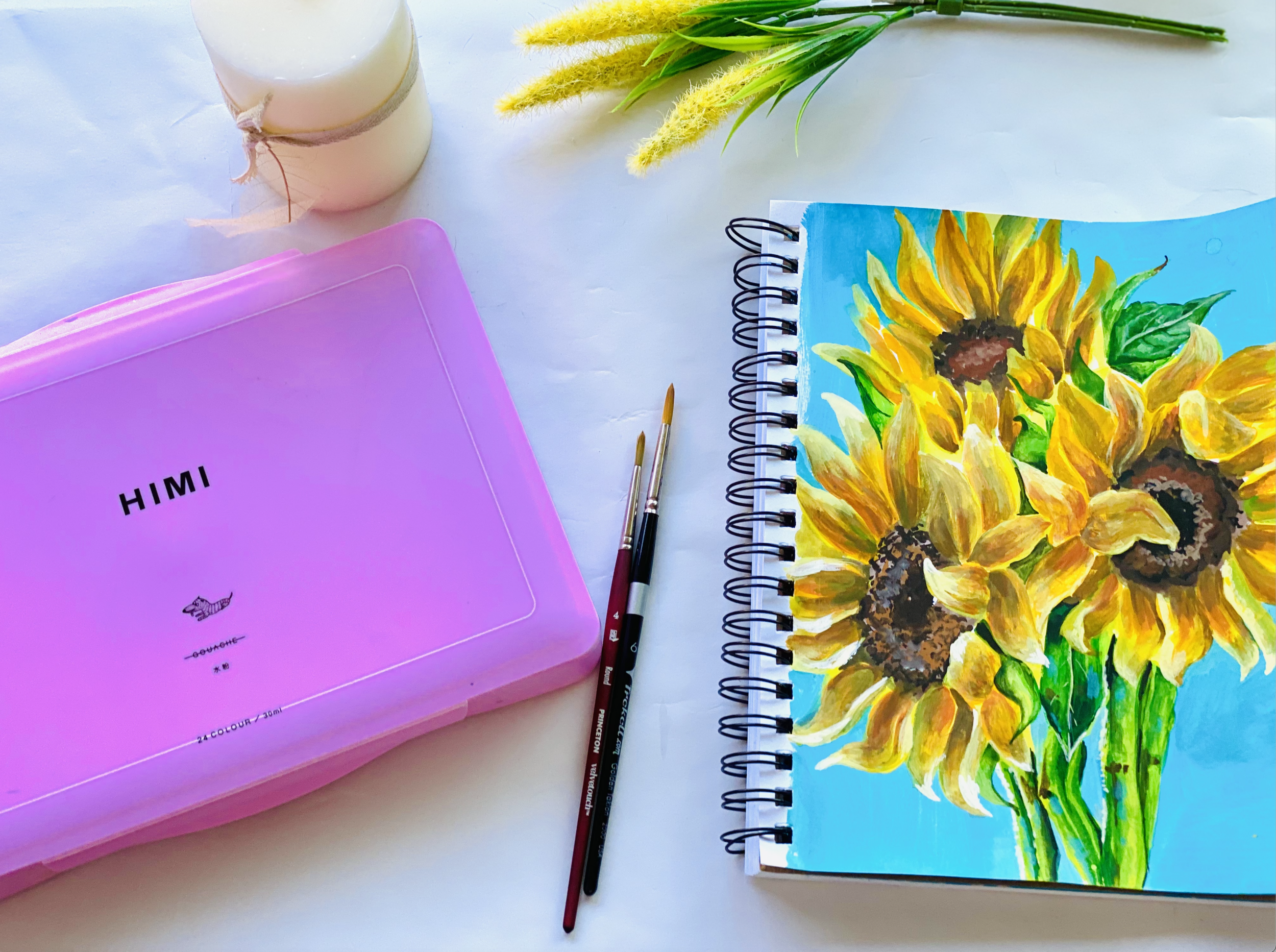What you cannot do with Himi Jelly Gouache: Gouache Review
Himi Jelly Gouache gained popularity last year as this product released in China. Used for decades by graphic designers, landscape artists, and game artists, it also goes by the name designer gouache. These new jelly gouache paints emerged as a new product on the market.
Youtube artists have done reviews of this new product and you can find a lot of demos. A lot of artists seem to like these paints, and there are not a lot of negative reviews for the product.
Here are some reasons you might want to reconsider these paints.
(The set comes with 24 vibrant colors.)
Benefits of Jelly Gouache
Jelly Gouache Requires Little Preparation
These paints, because they are “jelly,” wet paints, remain active in their small cups. You don’t have to activate them with water prior to using them. This makes these paints easy to use and require very little preparation before painting. In order to keep them wet, you should spray them with water after using them and periodically if you notice they begin to dry out.
Jelly Gouache is vibrant and dries close to original color
When the paint dries, depending on the surface you choose, the colors remain close to their original. Gouache is known for changing colors when it dries. These paints stay pretty close to their original color.
Negatives of Jelly Gouache Paints
Jelly gouache cups dry very quickly.
Simply said. These paints dry out quickly, so after using these paints you need to spray them with water. My after painting ritual involves spraying these paints with a cheap 99 cent water bottle to keep them active. I do this every time I reseal them in their container and when I open them again.
Learning to blend these paints is challenging.
I found blending with these paints was hard to learn. It took a lot of practice for me to get smooth backgrounds. This is coming from someone who uses gouache regularly. I felt like these paints act more like acrylic paints, than regular gouache. They also have a tacky, gummy texture.
Blending a blue sky color is impossible.
I attempted a landscape painting with the traditional colors you can mix to achieve this natural hue. The attempt was an utter failure using the blues provided in the set. Every mixture I created for blue sky, and I scoured the internet to see if it was just my mixing technique, but these paints just won’t create the color.
You’ll notice below that I attempted various mixes from the set in an attempt to get the sky blue color in a bright, sunlit sky. However, when the paint dried, it looked lifeless and desaturated on the paper. When wet paint was still active, it looked like it matched the color I was trying to achieve, but the dried page produced disappointment.
I was able to fix this problem by heading the Art Supply Warehouse for a tube of Daniel Smith Indanthrone Blue. This color in conjunction with the white provided in the Jelly Gouache set allowed me to create a more realistic blue. It dried the right color and worked for the landscape I was working on.
You can use watercolors with gouache. This is a whole other topic. I’ll be posting a tutorial about this topic soon.
In conclusion, I love the jelly gouache, but I would reconsider buying them again just because I paint landscapes so often. I think these paints are really well suited for painting faces and plants, but they don’t have the range to paint landscape or botanicals. I was disappointed in the limited range I could get with the green colors. I probably would go back to my Windsor & Newton paints. They are a lot more expensive, but I can achieve different things with them.
If you’d like to know more about my preferred paints, check out this other article on Daniel Smith Watercolors. For Inktober, I am also posting all of my paintings on Instagram. Feel free to follow me there.
